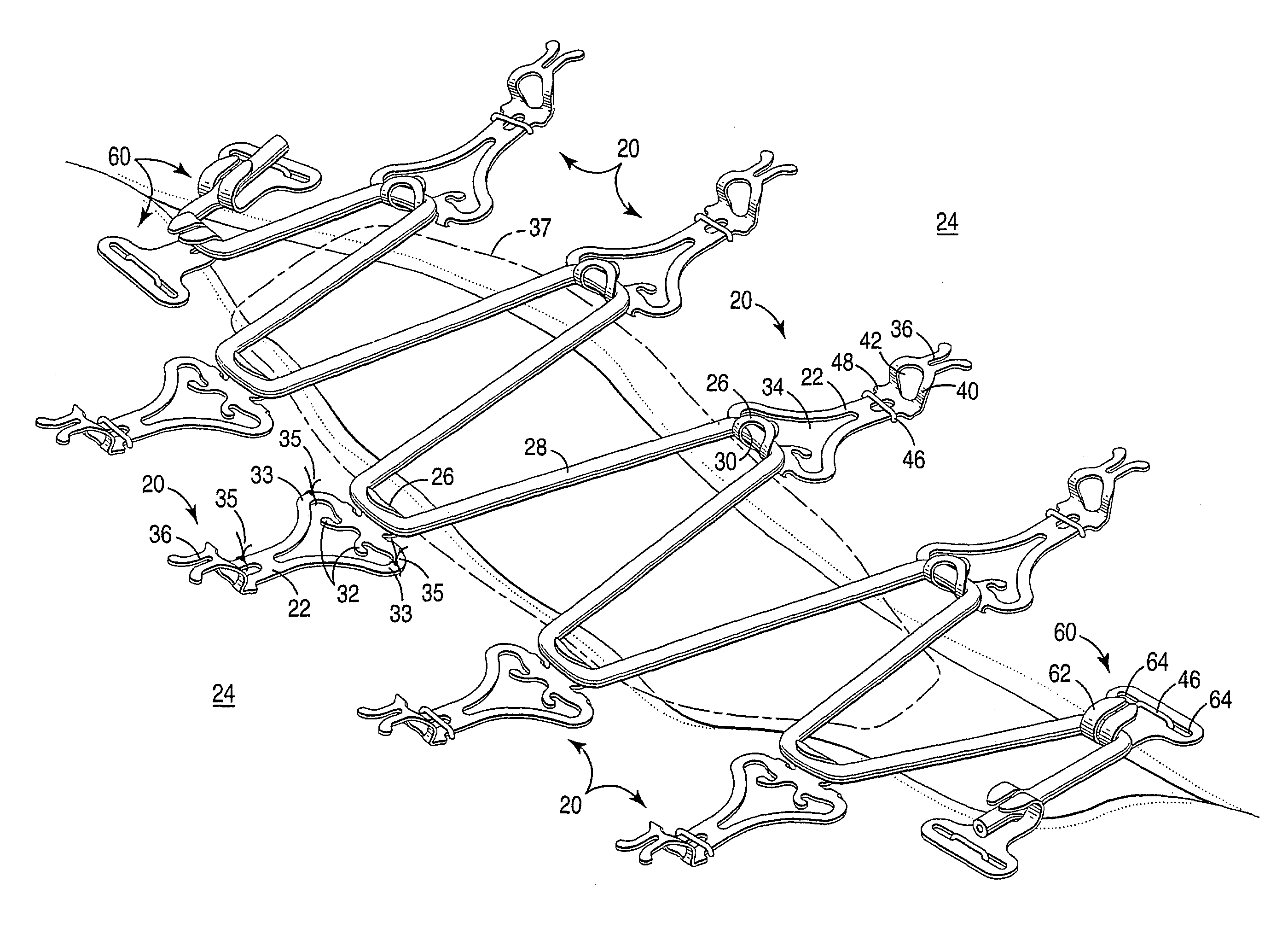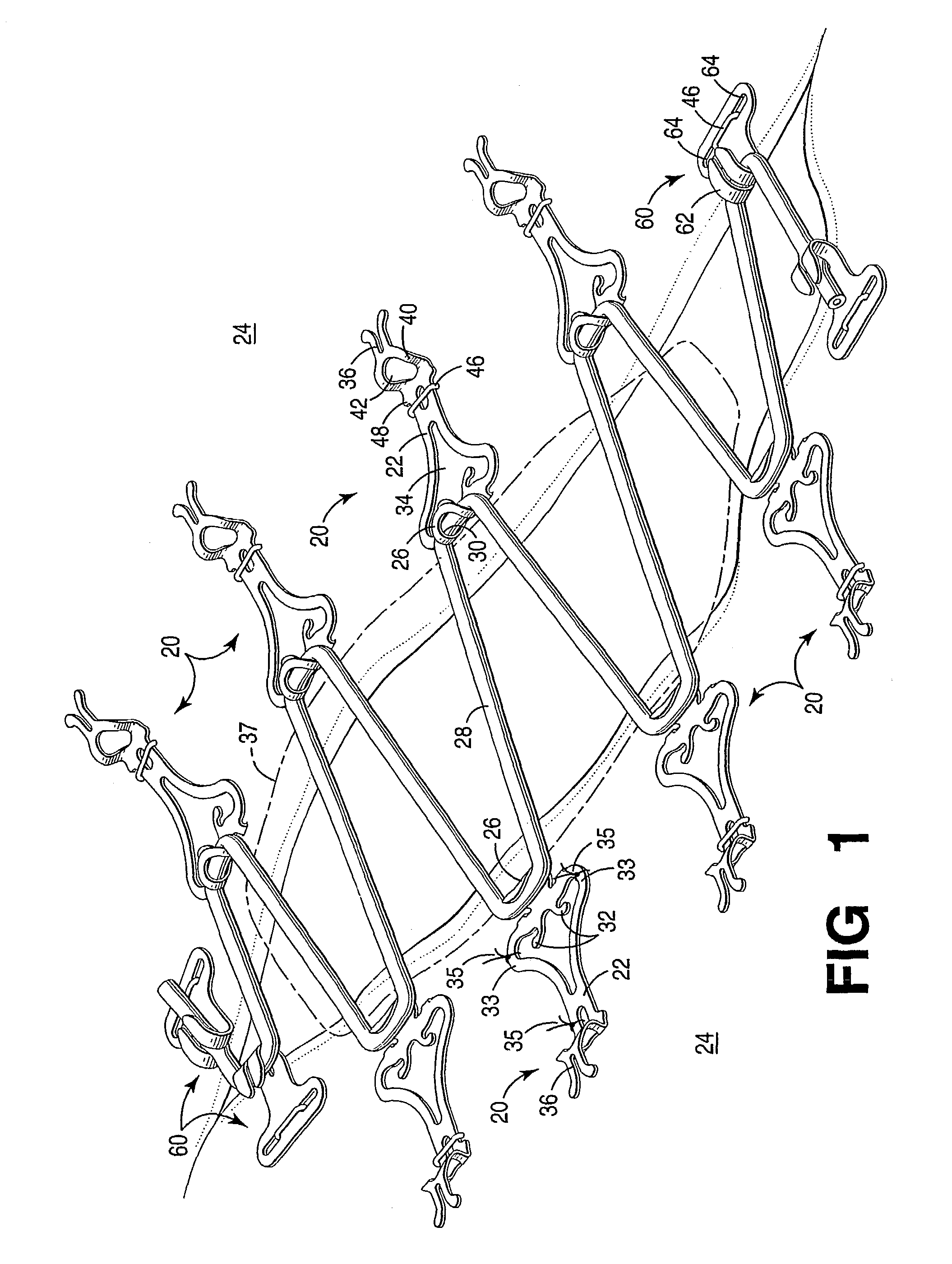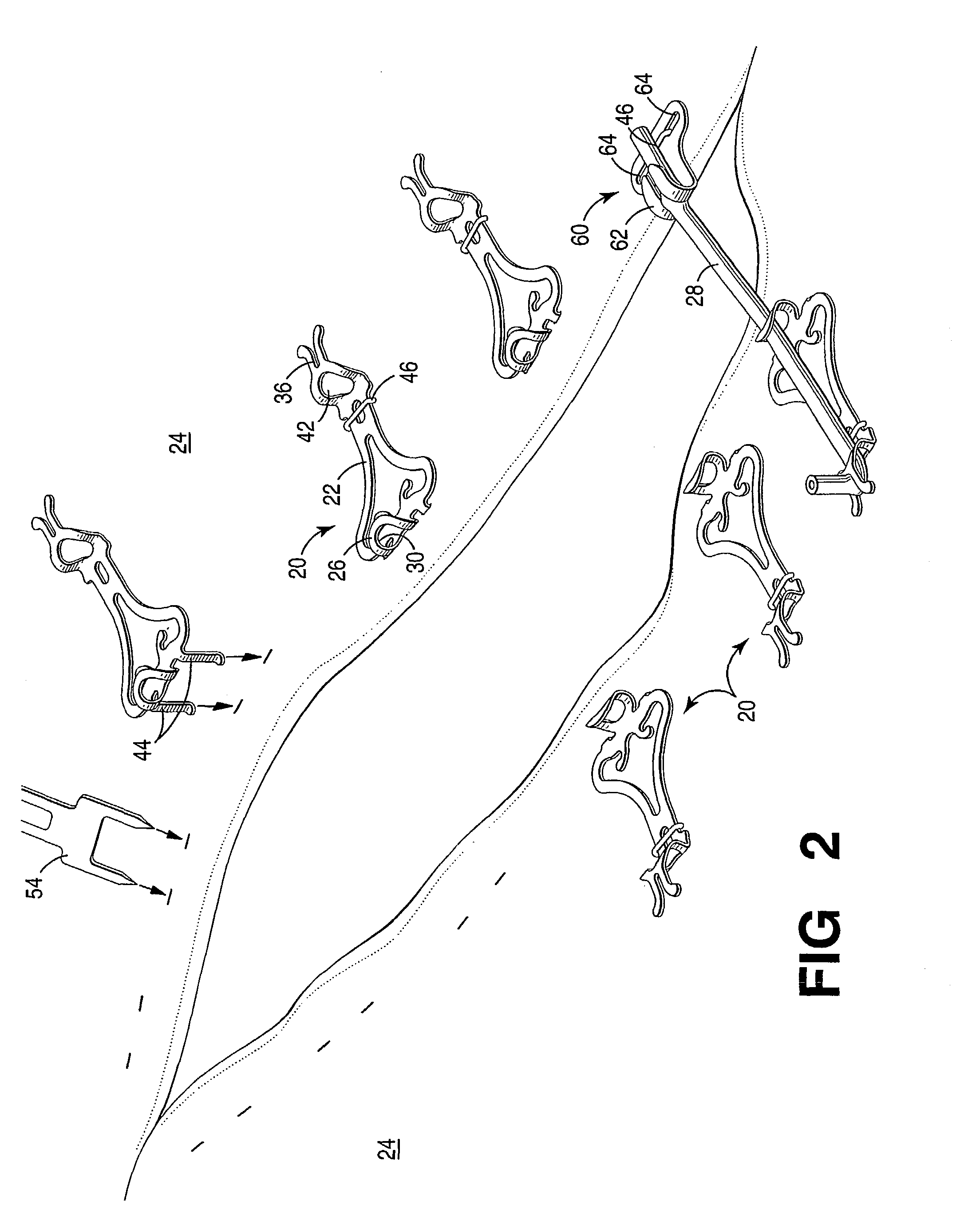System and method for moving and stretching plastic tissue
a plastic tissue and system technology, applied in the field of human and animal plastic tissue movement and stretching, can solve the problems of compounding maladies and significantly weakening the skin, and achieve the effect of minimizing necrosis and scaring, minimizing necrosis and scarring, and maximum safe traction pressure or force across the wound margin
- Summary
- Abstract
- Description
- Claims
- Application Information
AI Technical Summary
Benefits of technology
Problems solved by technology
Method used
Image
Examples
Embodiment Construction
[0037]Methods, systems and devices according to this invention provide a collection of components and techniques for moving and stretching plastic tissue. More specifically, the components are anchors and force applying components specifically including elastomeric components typically connected between and among two or more anchors. Methods, systems and devices according to this invention use dynamic opposing force that is equal to or greater than the elastomeric traction forces of the plastic tissue.
[0038]One system according to this invention includes at least one tissue anchor, which is an element that grips tissue using, for example, sutures, staples, flukes or prongs, adhesives, including surgical glue, or other suitable methods, and at least one elastomeric component. In one embodiment, the anchor is a staple. In a typical embodiment, multiple anchors are attached to the tissue proximate the edges of an open wound. Elastomeric components engage the anchors, providing a force ...
PUM
 Login to View More
Login to View More Abstract
Description
Claims
Application Information
 Login to View More
Login to View More - R&D
- Intellectual Property
- Life Sciences
- Materials
- Tech Scout
- Unparalleled Data Quality
- Higher Quality Content
- 60% Fewer Hallucinations
Browse by: Latest US Patents, China's latest patents, Technical Efficacy Thesaurus, Application Domain, Technology Topic, Popular Technical Reports.
© 2025 PatSnap. All rights reserved.Legal|Privacy policy|Modern Slavery Act Transparency Statement|Sitemap|About US| Contact US: help@patsnap.com



